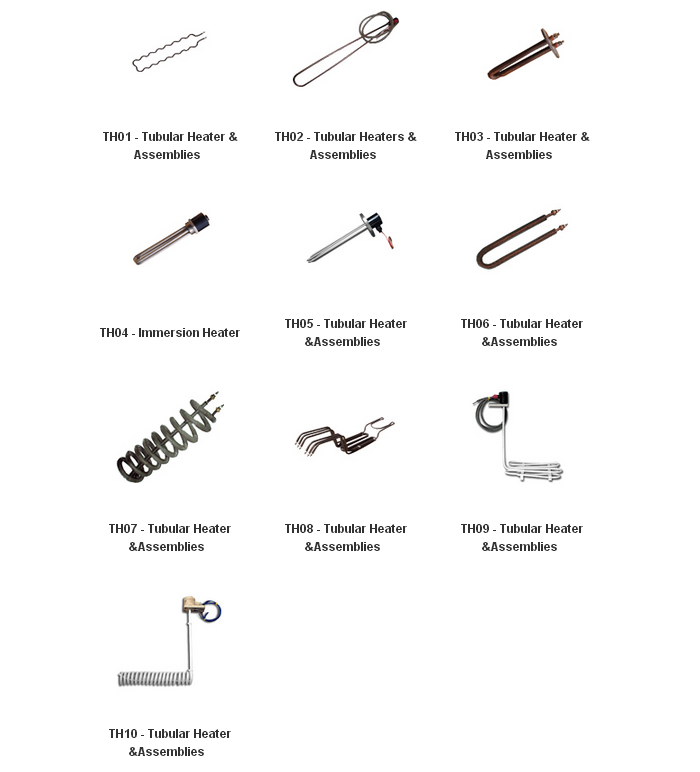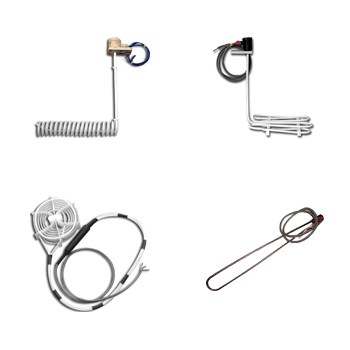Products
A cylindrical tube is provided of a mechanically strong and flexible electrical conductor such as a metal and has a plurality of separated regions. An electrically insulating layer such as a ceramic is applied on the outer surface except for one exposed portion. Electrically resistive heaters are then applied to the insulated regions and are electrically connected at one end to the underlying electrical conducting region. The electrical conductor is connected to the negative terminal of a power source. The other end of all the heaters are adapted to be connected to the positive terminal of the source. Accordingly, an electrically resistive heating circuit is formed wherein the tube serves as a common for all of the heating elements. The tubular heater can comprise an exposed end hub with a plurality of blades extending therefrom. Each blade can have an individual heater deposited thereon. Alternatively, every other blade can have a heater deposited thereon. The blades having no heater function as barriers to minimize outward escape of generated vapors. These barrier blades also function as heat sinks for the heaters on adjacent blades.


